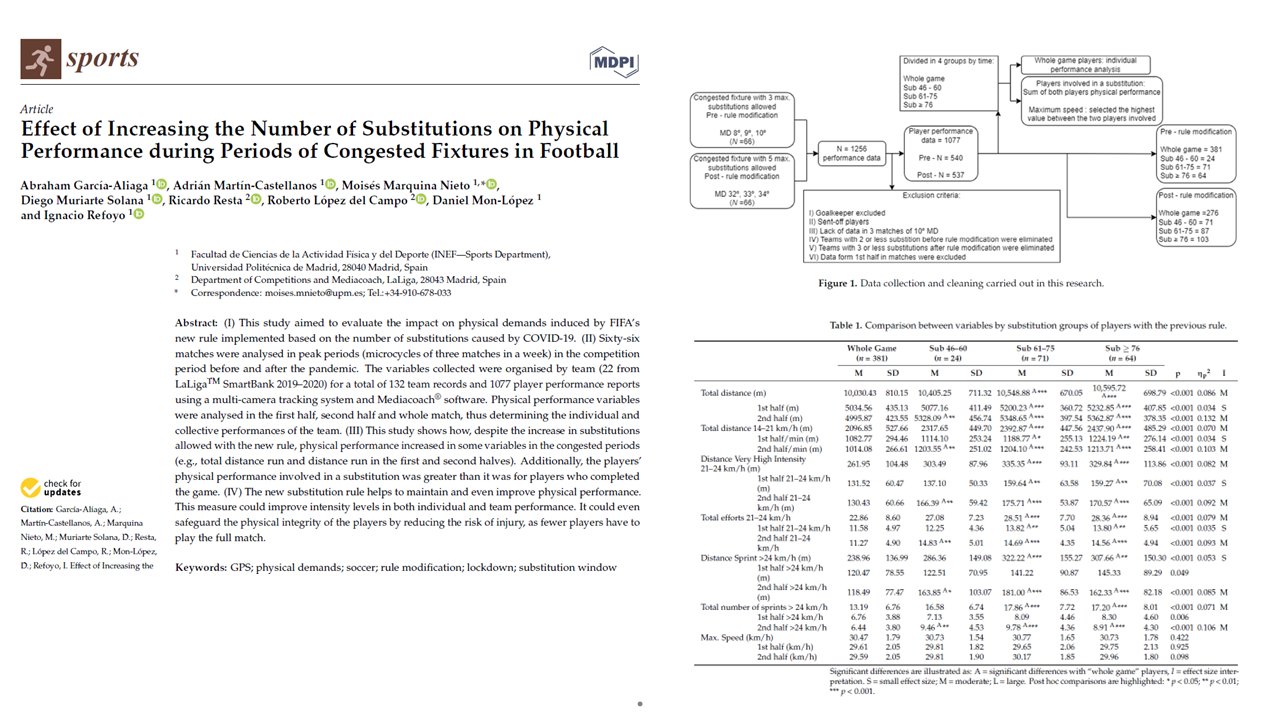
19 Ene Effect of Increasing the Number of Substitutions on Physical Performance during Periods of Congested Fixtures in Football
Plain-English Summary for First-Team Staff
This study tracked 66 LaLiga SmartBank matches played in congested weeks (three games in seven days) and analysed 1,077 player reports with Mediacoach. After the five-substitution rule came in, teams used more subs on average (≈2.94 ➜ 4.58 per match). Despite fixture congestion, physical output rose in several metrics—notably total distance across the game and high-intensity distance in second halves. Crucially, players involved in substitutions outperformed 90-minute players on key high-intensity indicators. In short: smarter rotation sustains late-game intensity during busy schedules.
What This Means for Your First-Team Workflow
- Plan for second-half lifts. Expect higher high-intensity running and more sprints from fresh legs, especially when subs enter in the 61′–75′ window.
- Use timing as a performance tool. Treat substitutions as load-management levers, not only tactical fixes; pre-plan two impact subs around minute 60–75 when game state allows.
- Keep the bench “match-ready.” During congested weeks, schedule short, high-speed exposures and sprint mechanics on MD-2/MD-1 (volume tightly controlled) for non-starters.
- Monitor by halves. Split Mediacoach/GPS reports into 1st vs 2nd half to confirm whether your bench is actually sustaining second-half intensity.
- Recover smarter. If second-half sprint actions spike, prioritise hamstring-focused recovery (eccentric posterior chain & adductors) and adjust next-day load.
- Selection policy. In three-match weeks, lean into rotation; late, high-speed subs help maintain team intensity without over-exposing starters.
How to Apply This Week
- Pre-assign two impact subs to enter between 61′ and 75′ (score-state permitting). Pre-brief roles: press trigger, wide running threat, penalty-box runner.
- Train the bench at game speed: 20–40 m high-speed runs into finishing or press-to-transition drills so they hit match pace immediately on entry.
- Individualise post-match recovery using half-by-half high-intensity and sprint counts; protect high-exposure starters and schedule top-ups for low-minute players within 24–36 h.
Limitations to Keep in Mind
Findings come from Spain’s second tier during the post-COVID return and focus on running-based metrics. Opponent quality, game model, and score state still modulate demands—use the evidence to guide policy, then tailor to your context.


